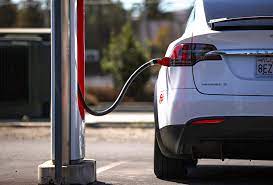Despite being a huge manufacturing country – the biggest in the world, in fact – until recently, China has not been on the radar when it comes to car manufacturing. Chinese automakers have never gained global attention for their high-quality petrol or diesel cars, with other U.S., European or Asian automakers proving more popular. However, as China takes the lead on renewable energy operations, the country is heavily focused on electric vehicles (EVs), with the government and private firms pumping billions into research and development. China accounts for around 28.7 percent of the global manufacturing output, followed by the U.S., at 16.8 percent. And yet, most people worldwide are far more aware of American car brands, with the U.S. earning $47.6 billion in car exports in 2020. But China is no longer focused on expanding its internal combustion engine (ICE) car market, as it directs its attention to EVs. Long before many other cities, in 2017, Beijing announced plans to ban the use of new ICE taxis, instead requiring any new taxi to be run on an electric battery, at an expected cost of $1.3 billion for the total conversion. This is not surprising considering that China has led the way in several types of green energy and related technologies, despite its continual reliance on fossil fuels for its domestic energy demand. And this is just one of the hundreds of initiatives that have given way to the rise of EVs.
Several EV manufacturers have boomed in China in recent years, with around 450 EV makers registered. By mid-2022, the four biggest included BYD, valued at $149 billion, with a 27.9 percent market share, SGMW with a 10.1 percent share, Chery at 4.9 percent, and GAC with a share of 4.2 percent. The EV and hybrid manufacturer BYD has attracted greater attention in recent years, as the world’s biggest EV producer, overtaking Tesla to claim the title in July 2022. Warren Buffet is among its famous investors. BYD now plans to launch three new EV models in Europe in competition with some of Europe’s most prominent automakers’ offerings.
Despite the lack of global awareness of Chinese car brands, China overtook Germany to become the world’s second-largest car exporter in 2022, shipping 2.6 million vehicles in the first 10 months of the year. This has been supported by investments from the major automakers in their own ships, to transport their cars from China to other markets. BYD ordered six ships in October at a cost of $710 million, with a capacity for 7,700 cars. Meanwhile, state-owned SAIC Motor Corp. intends to purchase seven new ships to transport 8.900 vehicles.
China’s biggest car export markets in the past have been concentrated in Africa and the Middle East. However, thanks to the rise of its EVs, it is beginning to develop export markets in North America and Europe, offering higher-end options than previously available from the Chinese market. In the first half of 2022, Western Europe accounted for around 34 percent of China’s passenger vehicle exports, with Belgium as the biggest importer. This is a trend that is set to continue as the global EV market continues to expand – with Europe leading this growth.
With Chinese automakers having risen to compete with the likes of Tesla in recent years in China, many of these manufacturers believe they can compete with other major car makers such as Volkswagen and BMW, which have only just begun their foray into EV development. Most European automakers continue to manufacture ICE vehicles, with strong demand for fossil fuel-powered cars expected to continue until city and country bans come into place, starting in 2030. This means that very few car makers are focusing solely on the development of their EV models and markets. By comparison, heavy subsidies from the Chinese government have made it possible for Chinese EV manufacturers to emerge quickly and become highly competitive with foreign rivals.
And while European manufacturers have the advantage of close access to the European market, as does Tesla thanks to its first European factory in Berlin, China is a manufacturing giant when it comes to electric batteries – providing around 75 percent of the world’s total – and other EV components. It is also the biggest lithium producer in the world, offering around 60 percent of the world’s lithium – a vital component in electric battery manufacturing.
Recent estimates from Fitch Solutions suggest that the share of Europe’s EV market from Chinese automakers could increase to 15 percent in 2025, from around 5 percent in 2022. This is largely thanks to their low-price offerings, which many European manufacturers simply cannot compete with. But can this boom last? Ana Nicholls, director of industry analysis at the Economist Intelligence Unit, explains: “It’s hard to see how the EV market can carry on expanding at quite this rate in the future.” And other Asian, European, and North American automakers are rapidly rising to compete with major EV makers, with plans to release several new EV models in the coming years. As demand rises, so will supply, and competition will become fiercer. But, for now, China looks likely to lead the way in the EV market in the coming years.

 Iran Energy News Oil, Gas, Petrochemical and Energy Field Specialized Channel
Iran Energy News Oil, Gas, Petrochemical and Energy Field Specialized Channel



